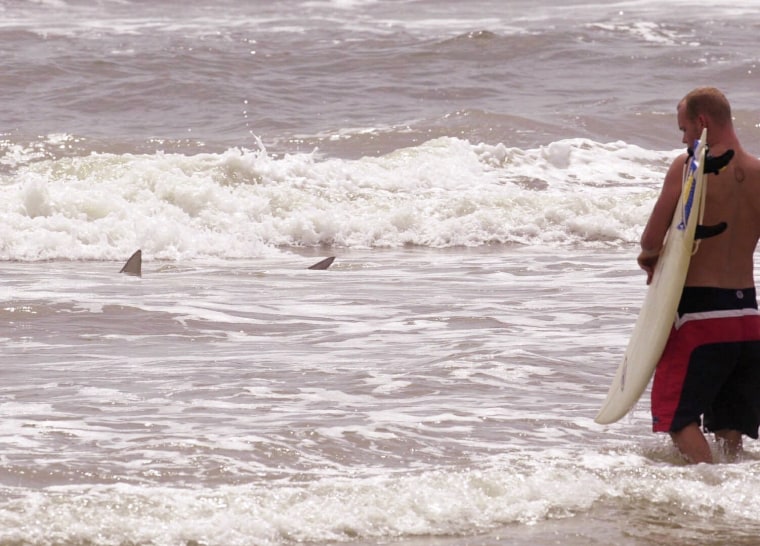There might not be a word more synonymous with "vacation " than "beach."
American households took nearly 55 million trips to the beach in 2006, according to the Travel Industry Association, a Washington, D.C.-based nonprofit trade organization that represents the U.S. travel industry. Similarly, in that same year, Australians took 17 million trips to the beach, according to Tourism Australia, a government agency.
Most of the time, beaches deliver a pleasant experience for everyone of all ages. But what about the horror stories we hear of, like shark attacks — which recently killed a triathlete off Solana Beach in San Diego County, Calif., — drowning or jellyfish poisoning, which just last year took the life of a 6-year-old boy in the Tiwi Islands, north of Darwin, Australia?
While these things do happen, none occur as often as you'd think, says Dr. Stephen P. Leatherman, director of the International Hurricane Research Center & Laboratory for Coastal Research at Florida International University in Miami.
"The biggest fear for people is sharks," says Leatherman, who releases an annual list of the 10 best beaches in the United States. "But in reality, you've got a better chance at winning the lottery than getting bitten."
In 2007, there were only 112 incidents worldwide of sharks biting humans, according to the International Shark Attack File, which is compiled by the Florida Program for Shark Research, a University of Florida organization that tracks shark behavior. Only one of these incidents resulted in death — most were minor bites.
Last year, New Smyrna Beach in Volusia, Fla., was home to the most shark attacks, with 17 total. However, George Burgess, director of the ISAF, is reluctant to even call these incidents "attacks." Most of the time, the Floridian species of sharks — blacktips, blacknoses or sharknoses — are smaller than six feet in length and are reacting to movement rather than trying to eat. If a person doesn't struggle once bitten, the shark will likely move away once it realizes that it hasn't caught its ideal prey.
"Generally, incidents are a case of mistaken identity," says Burgess. "If the human aggressively tries to pull the body part out of the mouth of the animal, tendons can be nipped or cut and they'll need some reconstructive surgery. But there will be no long-lasting injuries."
What can cause a lasting injury or death, however, is Northern Australia's chironex fleckeri, also known as the box jellyfish, which can be found on over 5,000 miles of Australian coastline. There have been 60 deaths from the chironex fleckeri in the last 100 years, according the Centre for Disease Control, Australia. That may not sound like much, but about 40 people are hospitalized each year in the Northern Territory because of this jellyfish.
The box jellyfish has the most rapidly acting venom among all different types of jellyfish and can cause cardiac dysfunction (resulting in loss of consciousness), cardiac arrest and death within five minutes of being stung.

Lightning is another threat often overlooked. At the beach, notes Leatherman, humans are the highest point, which means that they are the target for lightning during storms. Several beaches, such as New Smyrna and Clearwater in Florida — dubbed the Lightning Capital of the U.S. by the National Weather Service — have had to evacuate and then close for days because of the threat.
But of all the hazards, you're usually safe at the beach if you practice common sense, says Leatherman. First off, don't swim in polluted water; you probably won't die from a dirty beach, such as Hacks Point in Kent County, Md., but you are more likely to get sick. Secondly, scan the beach before you go in the water to avoid the rip current, which can be especially dangerous on beaches, including Merritt Island and Cocoa in Brevard County, Fla. Head inside if there's a storm brewing.
While all of these threats might be frightening to some degree, other, less-obvious ones affect beachgoers just about everywhere. "To me, the No. 1 hazard is sunburn," says Leatherman. "The reflection of the sand intensifies the UV rays three or four times per minute, increasing the chance of a burn. And we know that this damage can result in melanoma later on in life."
So it's important to wear sunscreen or limit direct exposure to the sun — the 60,000 cases of melanoma diagnosed in the U.S. in 2007 should be convincing enough. Because, after all, no one wants to associate the beach with a bad time. "The beach vacation brings you back to your youth," says Leatherman. "Most of the time, it's a lot of fun."
